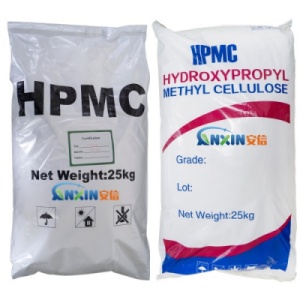Preparation of hydroxyethyl cellulose
1. Overview
Alkali cellulose is a natural polymer. Each of the fiber-based rings contains three hydroxyl groups, and the most reactive hydroxyl groups react to form hydroxyethyl cellulose.
The raw cotton linters or refine mash are soaked in 30% liquid alkali, and the press is taken out after half an hour. The mixture was press to an alkali-containing water ratio of 1:2.8 and pulverized. The pulverized alkali cellulose is put into the reaction vessel, sealed, vacuume, nitrogen-filled, and vacuum-filled with nitrogen to completely replace the air in the kettle.
The pre-cooled ethylene oxide liquid is press in, and the reaction jacket is pass through the cooling water. The reaction was controll at about 25 ° C for 2 h to obtain a crude hydroxyethyl cellulose. The crude product was wash with alcohol, neutralize with acetic acid to pH 4-6, and then aged with glyoxal.
It is then wash with water, centrifuge, dried, and ground to obtain hydroxyethylcellulose. Raw material consumption (kg/t): cotton short or low pulp: 730-780, liquid alkali (30%): 2400, ethylene oxide: 900, alcohol (95%): 4500, acetic acid: 240, ethylene Aldehyde (40%): 100-300.
2. Gas phase method:
The gas phase method is to add an additive or a diluent during the reaction, and the alkali fiber and EO are react in the gas phase. The cotton fiber was immerse, activate in a 18.5% NaOH solution, then press, pulverize, and placed in a reactor. The reactor was evacuate, nitrogen was add twice, and EO was add, and the reaction was carry out at a vacuum of 90.64 kPa and 27 to 32 ° C for 3 to 3.5 hours.
3. Liquid phase method:
The liquid phase method is an etherification reaction in the presence of a diluent. The cotton linters are alkalize and pressed in the presence of a diluent. The reaction with EO at 20 to 60 ° C for 1 to 3 hours gives a crude hydroxyethyl cellulose.
Commonly used diluents are acetone, isopropanol, tert-butanol or mixtures thereof. The product remained insoluble in the diluent.
Both the gas phase method and the liquid phase method require the preparation of alkali cellulose in advance.
That is, the cellulose is immerse in an 18% NaOH solution at about 20 ° C for degreasing, and after etherification reaction. After neutralization, washing, drying, and pulverization, the final product is obtaine



